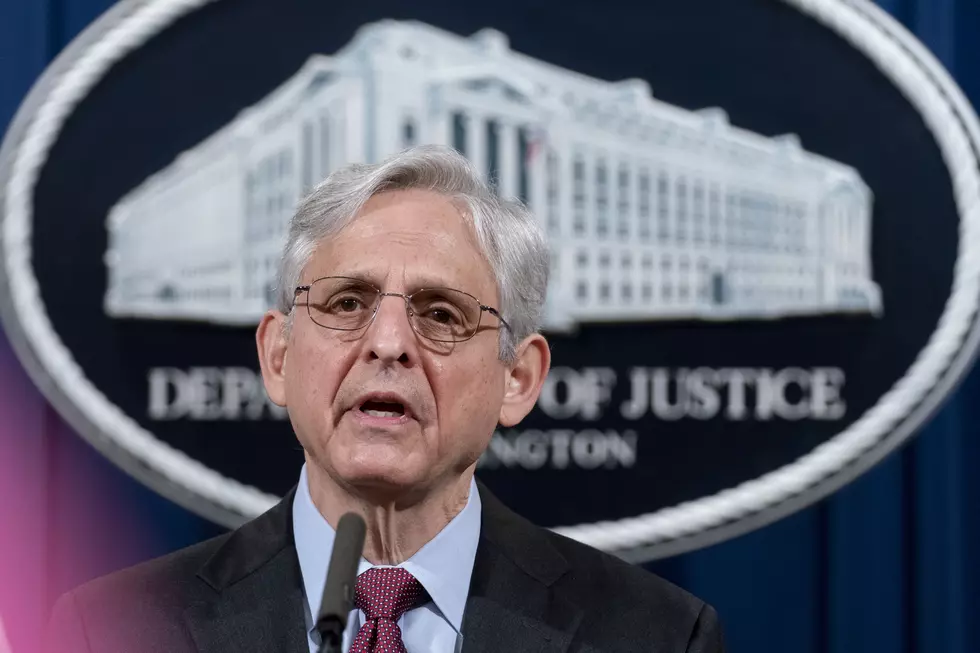
After George Floyd’s killing, DOJ probe finds Minneapolis police show pattern of violating rights

MINNEAPOLIS (AP) — The Justice Department accused Minneapolis police Friday of engaging in a pattern of violating constitutional rights and discriminating against Black and Native American people following an investigation prompted by the killing of George Floyd.
The sweeping two-year civil rights investigation concluded that systemic problems in the Minneapolis Police Department “made what happened to George Floyd possible."
The investigation found that Minneapolis officers used excessive force, including “unjustified deadly force,” and violated the rights of people engaged in constitutionally protected speech.
The probe also found that both Minneapolis police and the city discriminated against people with “behavioral health disabilities” when officers are called for help.
“For years, MPD used dangerous techniques and weapons against people who committed at most a petty offense and sometimes no offense at all,” the report said. Police “used force to punish people who made officers angry or criticized the police."
Officers "patrolled neighborhoods differently based on their racial composition and discriminated based on race when searching, handcuffing, or using force against people during stops,” the report said.
The “pattern or practice” investigation was launched in April 2021, a day after former officer Derek Chauvin, who is white, was convicted of murder and manslaughter in the May 25, 2020, killing of Floyd, who was Black.
Floyd repeatedly said he couldn’t breathe before going limp as Chauvin knelt on his neck for 9 1/2 minutes. The killing was recorded by a bystander and sparked months of mass protests as part of a broader national reckoning over racial injustice.
The report found that the city sent officers to behavioral health-related 911 calls, “even when a law enforcement response was not appropriate or necessary, sometimes with tragic results. These actions put MPD officers and the Minneapolis community at risk.”
The findings were based on reviews of documents and incident files; observation of body-worn camera videos; data provided by the city and police; and ride-alongs and conversations with officers, residents and others, the report says.
Federal investigators acknowledged that the city and Minneapolis police have already begun reforms.
The report noted that police are now prohibited from using neck restraints like the one Chauvin used in killing Floyd. Officers are no longer allowed to use some crowd control weapons without permission from the chief. And “no-knock” warrants were banned after the 2022 death of Amir Locke.
The city also has launched a “promising” behavioral health response program in which trained mental health professionals respond to some calls rather than police.
The Justice Department is not alone in its findings of problems.
A similar investigation by the Minnesota Department of Human Rights led to a “court-enforceable settlement agreement” to address the long list of problems identified in the report, with input from residents, officers, city staff and others. Frey and state Human Rights Commissioner Rebecca Lucero signed the agreement in March.
The state investigation, which concluded in April 2022, found “significant racial disparities with respect to officers’ use of force, traffic stops, searches, citations, and arrests.” And it criticized “an organizational culture where some officers and supervisors use racist, misogynistic, and disrespectful language with impunity.”
Lucero said the legally binding agreement requires the city and the police department to make “transformational changes” to fix the organizational culture of the force, noting it could serve as a model for how cities, police departments and community members elsewhere work to stop race-based policing.
The federal investigation could have prompted a separate but similar court-enforceable agreement, known as a consent decree, that would overlap the settlement with the state.
Several police departments in other cities operate under consent decrees for alleged civil rights violations. A consent decree requires agencies to meet specific goals before federal oversight is removed, a process that often takes many years at a cost of millions of dollars.
Floyd, 46, was arrested on suspicion of passing a counterfeit $20 bill for a pack of cigarettes at a corner market. He struggled with police when they tried to put him in a squad car, and though he was already handcuffed, they forced him on the ground.
As Chauvin pressed his knee against Floyd’s neck, officer J. Alexander Kueng held Floyd’s back, officer Thomas Lane held Floyd’s feet and officer Tou Thao kept bystanders back.
Chauvin was sentenced to 22 1/2 years for murder. He also pleaded guilty to a federal charge of violating Floyd’s civil rights and was sentenced to 21 years in that case. He is serving the sentences concurrently in Tucson, Arizona.
Kueng, Lane and Thao were convicted of federal charges in February 2022. All three were convicted of depriving Floyd of his right to medical care, and Thao and Kueng also were convicted of failing to intervene to stop Chauvin during the killing. Lane and Kueng have since pleaded guilty to a state count of aiding and abetting second-degree manslaughter. In exchange, counts of aiding and abetting murder were dropped.
Lane, who is white, is serving his 2 1/2-year federal sentence at a facility in Colorado. He is serving a three-year state sentence at the same time. Kueng, who is Black, is serving a three-year federal sentence in Ohio, while also serving a 3 1/2-year state sentence.
Thao, who is Hmong American, received a 3 1/2-year federal sentence. In May, the judge in the state case found him guilty of aiding and abetting manslaughter. Thao had said it “would be lying” to have pleaded guilty, and he agreed to let the judge decide the case. The judge set sentencing for Aug. 7.
Timeline: George Floyd's Death, Protests, Riots, Arrests, and Chauvin Trial
More From KROC-AM









